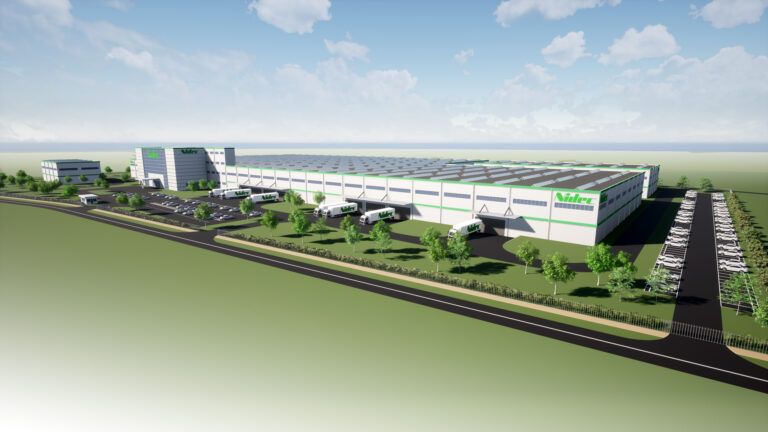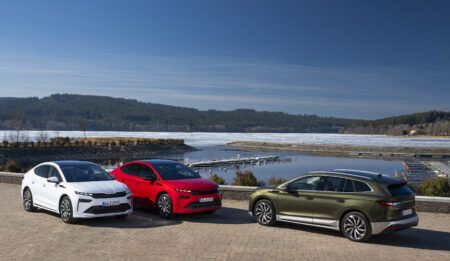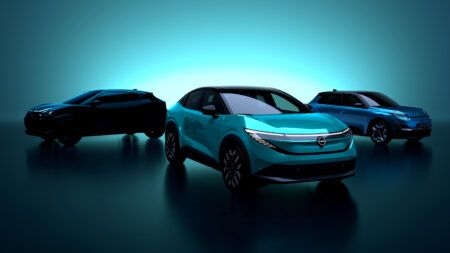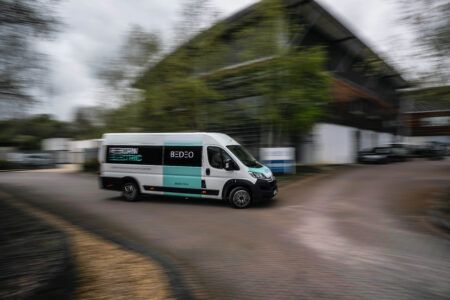At a recent event, electric motor manufacturer Nidec announced it is opening two factory facilities in Serbia to produce electric motors and components.
The Japanese company revealed the new factories will be constructed in the city of Novi Sad in the Republic of Serbia to manufacture and sell its automotive motors in one facilty, while another will manufacture inverters and ECUs. The automotive motor production facility is expected to employ a workforce of around 1,000 people, while the inverter facility will have a workforce of around 200. Both factories will begin construction later this year with an expected completion date of mid-2022.
A company press release said: “In Europe, where environmental regulations and major countries’ automobile CO2 emission regulations are becoming increasingly stricter, demand is expanding for automotive motors and related products, and for high-efficiency brushless DC motors for home appliance businesses.
Under the circumstances, to build an efficient system to supply the aforementioned and other products in Europe, the Company plans to open new factories in Serbia (i) to consolidate the Nidec Group’s production activities in East European region, and (ii) for Nidec’s Automotive Motor & Electronic Control Business Unit and group companies to launch multiple businesses in the future.
While the Company’s multiple businesses will be operated at the same sites to seek synergies by sharing the same production infrastructure and back-office, the new business bases will engage in, among others, supplying products to the European market, while looking to design and develop products locally in Serbia.”
Also at the event, Nidec’s president and chief operating officer, Jun Seki, took part in a Q&A session regarding the company’s recent strategy.
Q: For the automotive sector, for which vehicle application will Nidec produce the electric motors in Serbia? Will there be E-axle production in Serbia?
A: In Europe, most of our facilities are operating at full capacity, we are expecting further growth and need to be ready for more production capacity for a lot of orders for electric power motors, traction motors, inverters, etc. Not only for automotive but also compressor motor for air conditioners and other appliances (industrial/commercial motors)
Q: Nidec is relatively new to the automotive traction motor part of the business, how is the company able to win contracts over established companies?
A: Cost competitiveness is everything. Motors are more robust, but electric supplies are a bottleneck. For vehicles, cruising distance is limited by batteries. That is creating hesitation to EVs. For traction motors, we are seeing that our manufacturing cost is one third for engines and transmission. Those components are already very competitive (battery only is very expensive, but rapid battery cost reductions are expected) it is expected to be less than 10 yen per watt-hour by 2024.
Many customers have adapted expectations as well (shorter drive distance, etc.) by 2025, we are expecting some EVs to reach cheaper prices than gasoline engine vehicles. So with OEMs, we have to be very patient in the short-term. As there are low volumes they have high fixed cost for motors, this is where we can be competitive. We expect OEM to mostly abandon building motors by themselves for compact vehicles, while we are very confident due to scale-merit.
Technology-wise, we know how to decrease the cost of motors, for example inside cooling systems to make motors more compact and efficient. That is one example of why we are so competitive.
Q: Where do you see the highest growth potential for EVs at the moment? You are very strong in China already, now Europe/Japan is also growing, where do you see the biggest potential for the market in general and Nidec in particular? Also, can you speak towards political risk in China?
A: Looking at our customers, there are three types: Type A: don’t care about outsourcing their motors (e.g. Chinese manufacturers). Type B: Hybrid: they request for joint venture, they know motor company are best for building motors, but they want to retain some control. Type C: have a huge hesitation to ask for outside motors, they make motors by themselves, we already know their manufacturing cost is much higher than us, so it is a matter of time until they will become our customers, sooner or later they will outsource component by component, which we can respond to flexibly, after 2025 most of OEM will abandon in-house and outsource.
Production-wise, we believe the move towards compact EVs (which are cheaper than EVs now on the market) will continue, already Chinese manufacturers have shown great sales with compact EVs which are very cheap and lightweight (less than 10 KWh battery). We are receiving many inquiries for compact EVs, Tesla is selling very well for the upper end, but lower end EVs will see acceleration of growth. And we believe a “sandwich” status will happen, from Tesla at the top to the bottom from small EVs.
Of course there is risk political risk in China (US-China trade war), however this is nothing unique. To mitigate risks, localization is very important, e.g. localize production in China for the local market demand, we have a very high localization level in China which helps to minimize risks
Q: What are the advantages of localization in Serbia?
A: There are three major reasons. 1: In Asia we have some areas we installed our facilities, one successful model is China (Pinghu region, more than 2.5 billion Euro sales in China, 12,000 workforce); the beauty of this intensive production is that we have a very close relationship with the government, we can enjoy scale-merit, we can balance between high and low demand segments and leverage different areas.
With regards to Europe, we have more than 40 production sites, all from M&A. Naturally they are all isolated, so we decided from now on that we will create intensive production facilities, we researched where is the best place, and for workforce availability. We saw Serbia is best to scale our business, unique demography, young population, high availability of workforce, we can expand our workforce there to 10,000, 20,000 without any big problems.
2: When we go overseas, language barriers are always common, especially in Eastern Europe, Serbia has high levels of English, which makes communication much more easy.
3: Serbia is not in the EU, but it is on the path towards membership (maybe 2026-2028), if it does join the EU, many other industries start considering coming to Serbia, we will not be treated preferentially, which is why we decided to enter Serbia now.





